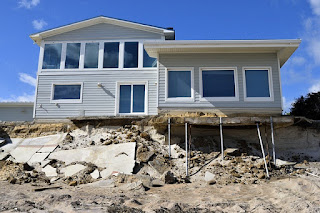The Different Types of Homeowner’s Insurance
There is no one-size-fits-all homeowner’s insurance. Each insurance
company has its own coverage types and limitations. When purchasing a homeowners insurance policy,
spend time looking at all the options available and also discuss the
matter with your insurance broker. He will be able to help you find the
right coverage at the right cost. Taking out coverage you don’t need is a
waste of money, but not having the protection you require could be
disastrous. The following outlines are intended to help you understand
the basic homeowner’s insurance types that are available.
Policy Types
Policy Types
- HO-1: Limited coverage Policy – This is a very basic policy that provides coverage against only a few specific types of disaster. It is no longer available in many states.
- HO-2: Basic Policy – This is an expanded version of HO-1 that offers protection against a slightly larger range of disasters. There is a version of this available that has been created specifically for mobile homes.
- HO-3: General Coverage Policy – This is the most common and popular type of policy. It offers protection against all types of risks, excepting those that have been specifically excluded in the policy document.
- HO-8: Old Home Policy – This policy, designed for older homes provides for compensation for damage on an actual cash basis. This equates to replacement cost less depreciation. In some cases, if the home is very old, full replacement cost coverage may not be available.
- HO-4: Renter’s Policy – As the names says, this policy is for those who stay in rented homes. It offers protection for all the renter’s possession and any fixtures or fittings, such as new kitchen cabinets, that the renter may have installed at his own cost.
- HO-6: Condo / Co-Op Policy– This policy provides condo and co-op owners coverage for their belongings in the condo or co-op and also for any parts of the structure that they may own.
Options
The following options are normally available for all types of homeowner’s insurance.
- Actual Cash Value: This covers the replacement of a home and/or possession with deduction for depreciation
- Replacement Cost: This covers the actual cost of replacing a home and/or possession. There is no deduction for depreciation.
- Guaranteed / Extended Replacement Cost: This is the most comprehensive type of coverage with the greatest protection. Under this option, the policy will cover the full cost of replacing a home to what it was before the loss, irrespective of the actual cost. This means the homeowner is covered even if the replacement cost is greater than the policy limit. This option will normally not cover the cost of upgrading the home to comply with current building codes. However, it is often possible to get an endorsement that will also cover these costs. In some cases, an insurance company may offer an extended replacement coverage instead of a guaranteed one. This will cover replacement cost to a fixed percentage over the policy limit.
If you are planning on purchasing a homeowner’s insurance or want to check if your existing coverage is right for you, consult an insurance professional. He will be able to guide you through the different policy types and options to find the coverage that is right for you.



Comments
Post a Comment